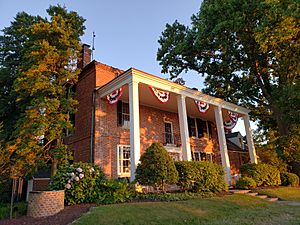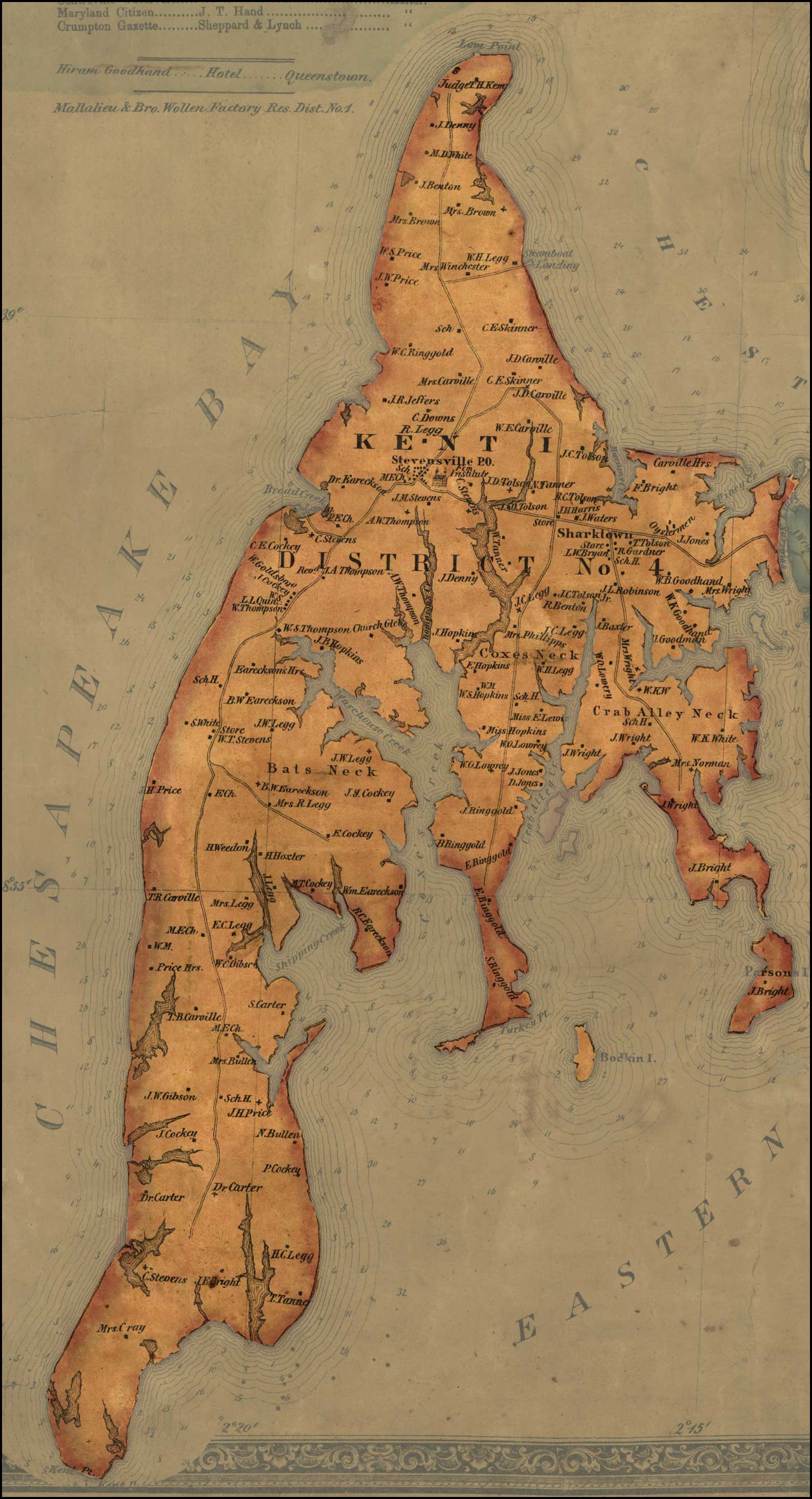Stoopley Gibson Manor facts for kids
Quick facts for kids Stoopley Gibson Manor |
|
|---|---|

Current view from the Chester River
|
|
| Type | Manor |
| Location | Kent Island, Maryland |
| Area | 200 acres (81 ha) |
| Built | 1760 |
| Built by | Francis Bright |
| Architectural style(s) | Georgian |
| Governing body | Private |
| Lua error in Module:Location_map at line 420: attempt to index field 'wikibase' (a nil value). | |
The historic Stoopley-Gibson Manor is a grand, three-story brick house built in the 1700s. It sits along the Chester River on the north side of Kent Island in Maryland. This beautiful home shows off the Georgian style.
The land for the manor was first given to Henry Stoupe and John Gibson in 1656. It was about 150 acres (61 ha) back then. By 1798, the property had grown to 176 acres (71 ha), and the house was mentioned for the first time in tax records. The manor was made bigger in the mid-1800s, and then again in the 1900s and 2000s.
One special thing about the house is its original brickwork on the south side. This type of brick pattern was common in homes in Annapolis and Chestertown during that time. The house also has a two-story porch on the north side, which looks a bit like the famous Mount Vernon.
The manor has some interesting local history. For example, a man named Henry Massey, who was enslaved, escaped from the home in 1854. There was also a family cemetery on the property that has since been lost due to the river's edge eroding away.
Contents
Early Owners: Stoupe and Gibson (1656–1730)
The land where Stoopley Gibson Manor stands today was first given as a land grant on November 12, 1656. It was given to two "partners," Henry Stoupe and John Gibson. They bought an extra 100 acres (40 ha) from John Winchester in 1657, adding to their 150 acres (61 ha) lot.
Later, half of the property was sold to Andrew Helena in 1658. When Andrew died in 1660, his wife inherited the land. She remarried several times. By 1694, the land belonged to Elinor's two daughters. Their husbands, William Joyner and Lawrence Arnold, owned it together. We don't have many records about the property from 1694 until it was officially measured again in 1730.
The Bright Family Takes Over (1730–1868)
Even though we don't know exactly who owned the property in the early 1700s, a man named Francis Bright had the 200-acre property measured and officially claimed in 1730. The first time the manor house was mentioned in writing was in a 1798 tax record. It described "a dwelling valued at $600, a barn, and a corn house." This shows the house was already there and part of a working farm.
The home and farm stayed with the Bright family for many generations. They owned it from the time of the American Revolution until the American Civil War. It was a good example of a farm from the 1700s and 1800s in the mid-Atlantic region. Records show that many enslaved people lived and worked on the property. One of them was Henry Massey, who escaped from the farm. He was later caught in Pennsylvania and brought back to Franklin Bright in September 1854.
Franklin Bright was the last Bright family member to own the manor. He died in 1865 at age 41, without a will or any children. People have wondered if he joined the Confederate Army during the Civil War and was killed, especially since he owned enslaved people and depended on farming. However, there are no official records to prove this.
The White Family's Time (1868–1933)
After the Civil War and Franklin Bright's death, a local farmer named Marmaduke White bought the manor. He already owned land nearby. In 1880, a court document described the property. It said it had "a two story brick house with attic, with a frame back building and all the necessary outbuildings." This means the house was a good size and had other important buildings for the farm.
The property remained with the White family as a working farm until the early 1900s.
The McGuckin Family's Changes (1933–1950)
Stoopley Gibson Manor was bought by Benjamin F. McGuckin and his wife Gertrude in November 1933. Mr. McGuckin was an important businessman from New York. The purchase involved several people from the White family, including T. Walter White, who was farming the 159 acres (64 ha) property at the time. There were some disagreements among the White family members, which delayed the sale. But the court in Queen Anne's County settled the issues by March 14, 1934, and the property was sold for $15,000.
Soon after buying the manor, the McGuckins started a big project to fix up the house and property. At the time, it was called "one of the fine waterfront properties of the county." They added a new section to the west side of the house. This new part included a kitchen, laundry room, mud room, and a dining room for staff. They also built a separate garage, a greenhouse, and a swimming pool. The McGuckins were able to move into their newly renovated home from New York by June 20, 1935.
New Development: Gibson's Grant (2000–Present)
In 2000, the property was sold to a company called White's Heritage Partners. They divided the land into smaller pieces and created a new neighborhood called Gibson's Grant. The last person to live in the manor before this development was Luther Gregory, who passed away in 2006.
The Stoopley Gibson Manor was featured in the 2019 Maryland Home and Garden Pilgrimage. This event allows people to visit historic homes and gardens.
Images for kids






